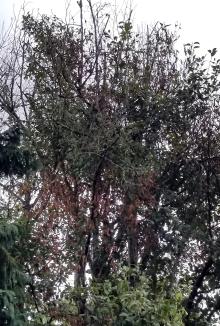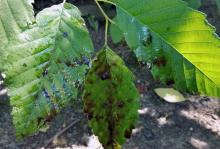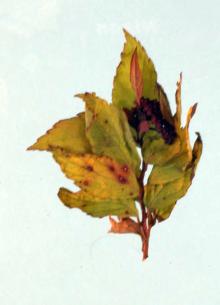Cause Fungal growth at the base of various conifers during the PNW rainy season has been repeatedly identified as Coniophora sp. Coniophora puteana is a known root and butt rot pathogen causing a brown rot decay of Engelmann spruce (Picea engelmannii) and other forest conifers. In the landscape, this growth has not been associated with decline, rot or structural problems of trees.









